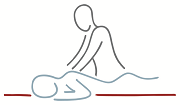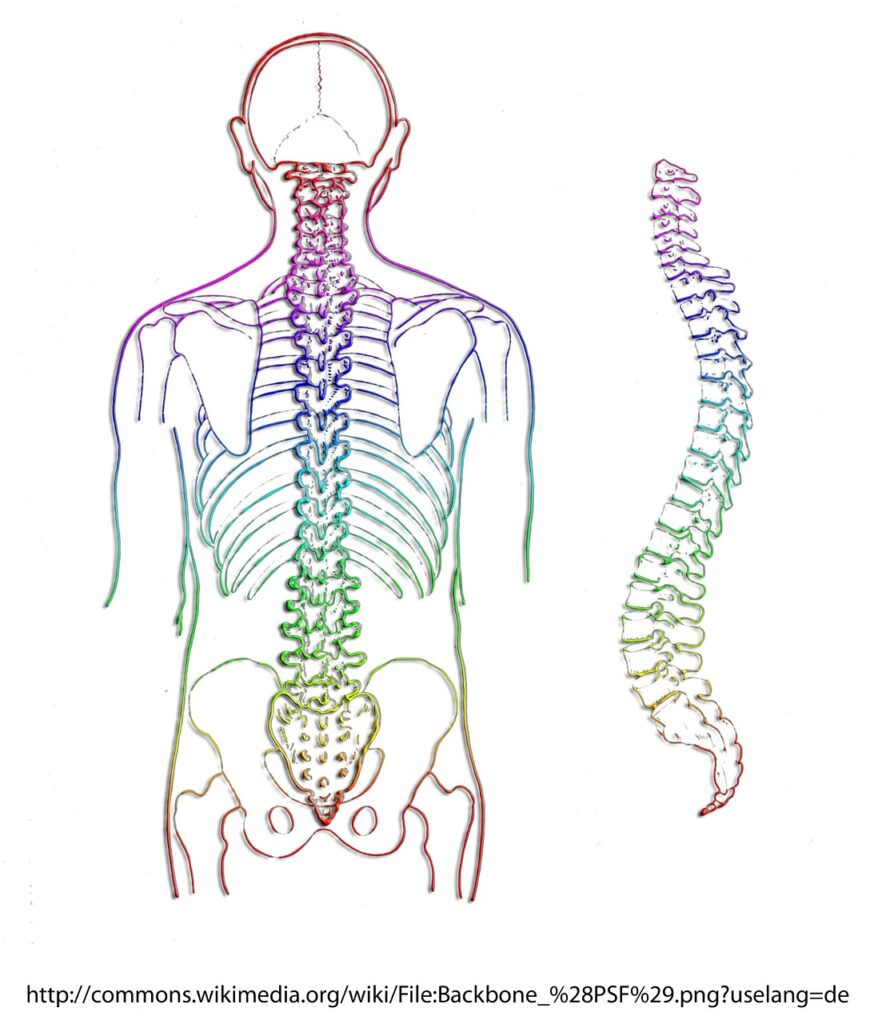Spine Facts
The human spine consists of 33 interlocking bones known as Vertebrae. This chain also involves more than 100 joints, 220 ligaments and 120 muscles. Often, medical professionals and therapists split the spine into 5 sections. These are called (from the top down) – Cervical, Thoracic, Lumbar, Sacrum and Coccyx.
The Spine’s main function is to protect the Spinal Cord. This column of nerves connects your brain to the rest of the body, allowing you to control your movements and organ functions. Serious damage to the spinal cord can cause paralysis or organ failure. Other, more minor issues can cause pain or loss of function in some areas.
Between each vertebra of the upper three sections is a shock absorbing disc. This disc is made up of a soft gel-like centre encased in a strong outer shell. Occasionally, discs can tear and allow the gel to leak out. This is often called a “slipped” disc and can be very painful. It is a common cause of “Sciatica” and will require medical treatment from your G.P.
The spine also supports your head, gives a framework for your body and allows for the attachment of your limbs. Apart from disc problems or chronic conditions such as Osteoarthritis, most back pain is caused by small muscle strains or lack of activity. Regular movement keeps all of our joints lubricated, including those in the spine. A daily stretch routine incorporating your whole body along with regular strengthening exercises for your core and back muscles will help you to maintain a pain free lifestyle.
Spinal Surgery
Surgery can be used to treat back pain that does not improve after non-invasive treatments such as Physiotherapy or pain-relieving injections. There are two main types of spine surgery, Decompression and Fusion, but a number of different methods can be used to achieve the end goal.
Decompression surgery
This is used to treat conditions that result in impingement of the nerves that radiate out from your spinal column. These include Spinal Stenosis – narrowing of a section of the spinal column, a damaged or herniated (slipped) disc, Spinal injuries or Cancer.
Often, the nerve that is affected is the Sciatic which controls the legs and feet. If this nerve is compressed the patient experiences pain, tingling and weakness down the leg and any movement is painful and difficult.
The two main types of decompression surgery are Laminectomy and Discectomy. In a Laminectomy, a small section of bone is removed from the vertebrae to relieve pressure. Alternatively, in a Discectomy it is a section of disc that is removed or trimmed.
Spinal Fusion surgery
This is used to strengthen and stabilise your spine. Two or more vertebrae are joined together using bone grafts, screws or rods. The bone grafts could be from somewhere else in your body or be artificial. Another method of bone fusion is Vertebroplasty, where a type of bone cement is injected into the spine to repair a collapsed vertebra. This is usually because of Osteoporosis or serious trauma to the bones.
The majority of spine surgery is done using open surgery. This means there will be an incision in the skin and muscles in order to reach the spine. Healing times will vary depending on your health and fitness before the operation. You will need a Physiotherapist’s help to safely regain your strength and movement. They will give you exercises to do at home during your recovery. Exercise and movement after surgery is key to reducing excess scar tissue build up and making sure the new tissue heals in an efficient and effective way.
How can I help?
Scar massage during the first two years after surgery can help to reduce swelling, improve blood flow and increase range of motion by releasing tension in the tissues and increasing flexibility of the scar tissue.
If you have any questions about how I may be able to help, please don’t hesitate to get in touch for a no-obligation chat.

